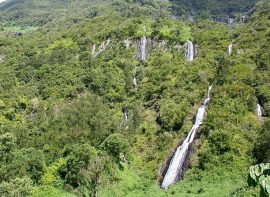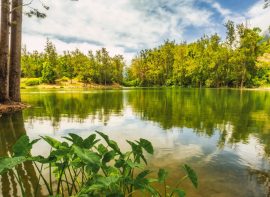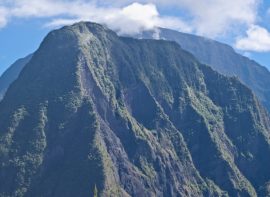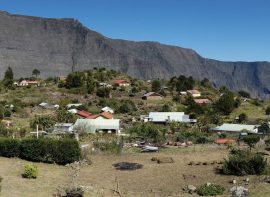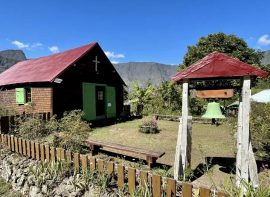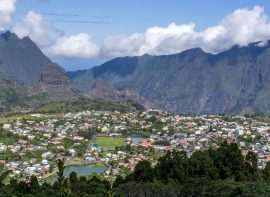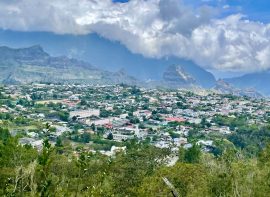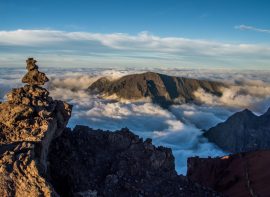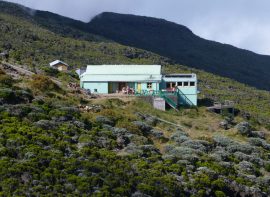
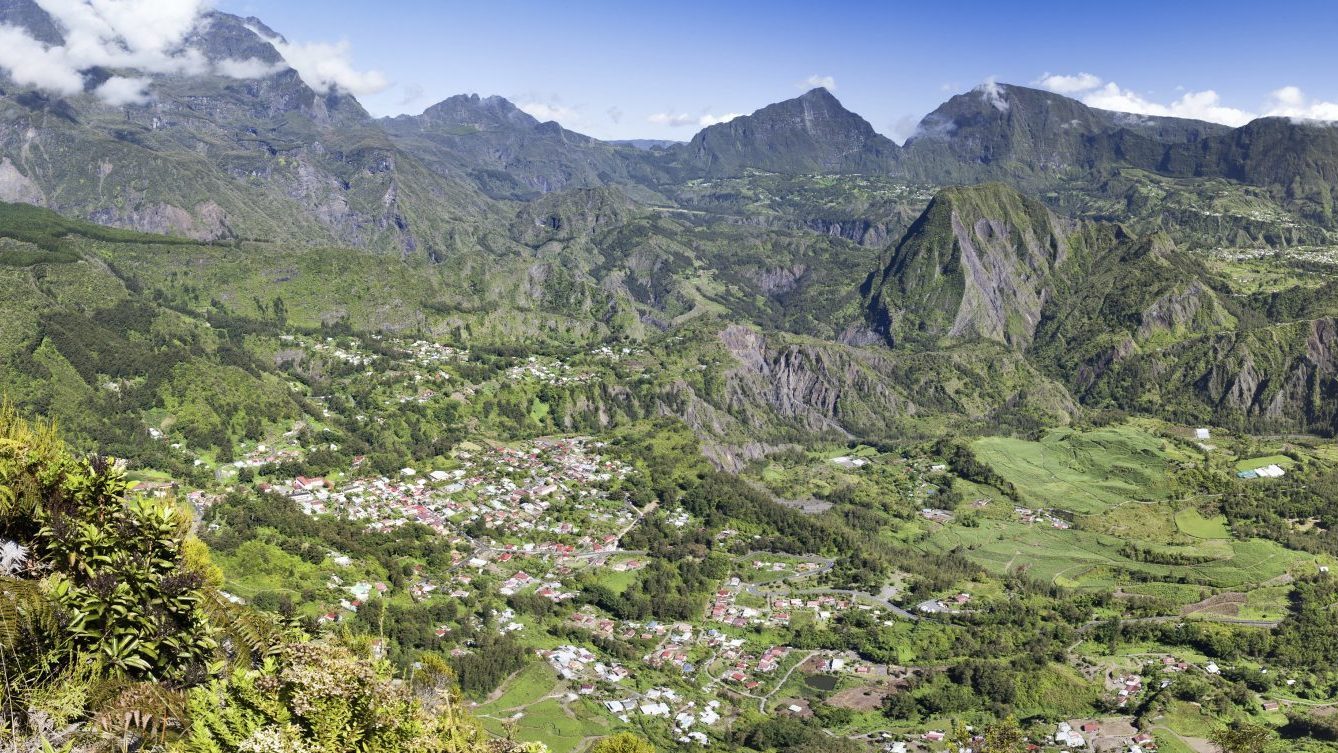
Salazie is one of the three cirques on Reunion Island, along with Mafate and Cilaos. Like its neighbors, it is a UNESCO World Heritage Site. A haven of peace and lush greenery, the Salazie cirque is not only the greenest, but also the easiest to access of the three. Located on the heights of Saint-André, it is reached by a single road that runs along the Rivière du Mât gorges.
Abundant rainfall feeds the many waterfalls that tumble down the steep ramparts. Its humid climate favors the development of dense vegetation, including typical crops such as watercress and, above all, chouchou (or christophine or chayotte). This famous vegetable of the cucurbit family is the emblem of the cirque, and an annual festival is held in Hell-Bourg in June.
Among the natural beauties of the cirque to be discovered by car or on foot, the most impressive waterfall is undoubtedly the Voile de la Mariée, an immense waterfall splitting into several smaller cascades, which you can admire from the road between Salazie and Hell-Bourg. At the center of the cirque stands the imposing Piton d’Anchaing (1352m), witness to an original geological event that has earned it its place on the World Heritage List. It owes its name to a slave who escaped servitude by taking refuge on this isolated promontory. The Salazie cirque is also one of the three main gateways to the Mafate cirque.
In addition to its magnificent, unspoiled natural environment, it is also home to a remarkable built heritage, as evidenced by a number of beautiful villages and islets, including Hell-Bourg, which has held the “Most Beautiful Villages in France” label since 1998, and which has preserved some of the finest Creole houses with colorful facades from its spa past. The Cirque de Salazie has retained its charm and authenticity, and is home to some of the island’s most beautiful Creole huts and gardens.
History
From the 17th century onwards, the cirque, like the cirques of Cilaos and Mafate, served as a refuge for black maroons fleeing slavery on the agricultural estates of the coast. The main consequence of the owners’ repression of these maroon slaves, in the form of punitive expeditions, was the discovery of the Salazie cirque. Some of the black maroons left their names to localities such as the piton d’Anchaing, named after a slave who took refuge there with his wife Héva.
In the 19th century, some farm workers fled the farms of the large landowners, and these “Petits Blancs” emigrated to the upper reaches of the island, at the edge of cultivated land, living by hunting, fishing and gathering. Their lifestyle was similar to that of the Black Maroons. This was the beginning of the settlement of the cirque. Today, Salazie’s main economic activities are agriculture and tourism.
